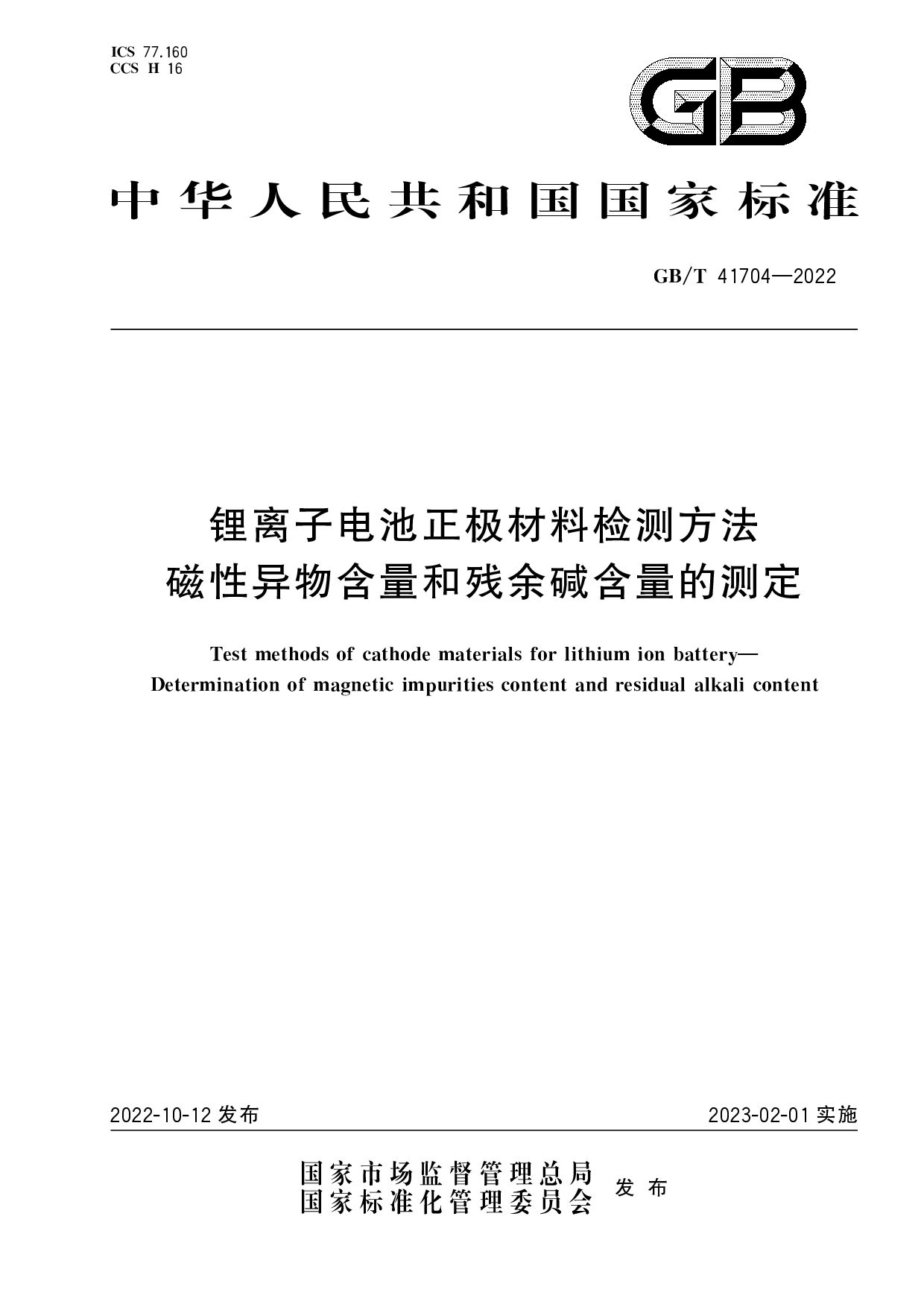GB/T 41704-2022
Test methods of cathode materials for lithium ion battery—Determination of magnetic impurities content and residual alkali content (English Version)

- Standard No.
- GB/T 41704-2022
- Language
- Chinese, Available in English version
- Release Date
- 2022
- Published By
- General Administration of Quality Supervision, Inspection and Quarantine of the People‘s Republic of China
- Latest
- GB/T 41704-2022
- Scope
- This document specifies the methods for the determination of magnetic foreign matter content and residual alkali content in cathode materials for lithium-ion batteries. This document is applicable to the determination of magnetic foreign matter content and residual alkali content in lithium-ion battery cathode materials. The determination range of magnetic foreign matter content is ≥1μg/kg, and the determination range (mass fraction) of residual alkali content is 0.001%~2.500%.
- Introduction
Interpretation of key technical specifications
Standard technical background
magnetic foreign matter and residual alkali exceeding the standard will lead to serious safety hazards and process failure of lithium-ion batteries. The current industry urgently needs unified testing:
Hazard type Critical value Failure consequences Magnetic foreign matter contamination ≥15μm particles Diaphragm penetration ⟹Internal short circuit ⟹Thermal runaway Excessive residual alkali >1000ppm Slurry gel ⟹Coating cracking ⟹Capacity diving
Magnetic foreign matter detection method system
Instrument comparison features
Method name Key indicators Inductively coupled plasma spectroscopy (ICP-AES) Multi-element quantification (Fe/Cr/Ni/Zn)· Linear range 0.02-20μg/mL· RSD₁<5% Scanning electron microscope energy dispersive spectroscopy (SEM-EDS) Particle morphology + composition analysis· Particle size recognition threshold 0.1μm· High-precision magnetic separation system Calculation formula differences
- No interference from substrate: Σ(Fe+Cr+Ni+Zn)×V/sample mass
- Main iron-containing component: Introduce lithium content correction factor to eliminate matrix effect
- Sample impurity removal: Triple material immersion phase transfer and mass transfer calibration
Main quality control items for residual alkali test
Acid-base potentiometric titration double jump method is used:
w(Li₂CO3) = [c*(V2-V1)*m3*73.89]/[m1*1000]
Key error control points:
- The hydration reaction temperature is constant at 25±2℃·The time should be <5min to prevent solution variation
- The filtration vacuum is maintained at <10kPa to maintain the filtrate penetration rate
GB/T 41704-2022 Referenced Document
- GB/T 601 Chemical reagent.Preparations of reference titration solutions
- GB/T 6682 Water for analytical laboratory use.Specification and test methods
- GB/T 8170 Rules of rounding off for numerical values & expression and judgement of limiting values
GB/T 41704-2022 history
- 2022 GB/T 41704-2022 Test methods of cathode materials for lithium ion battery—Determination of magnetic impurities content and residual alkali content